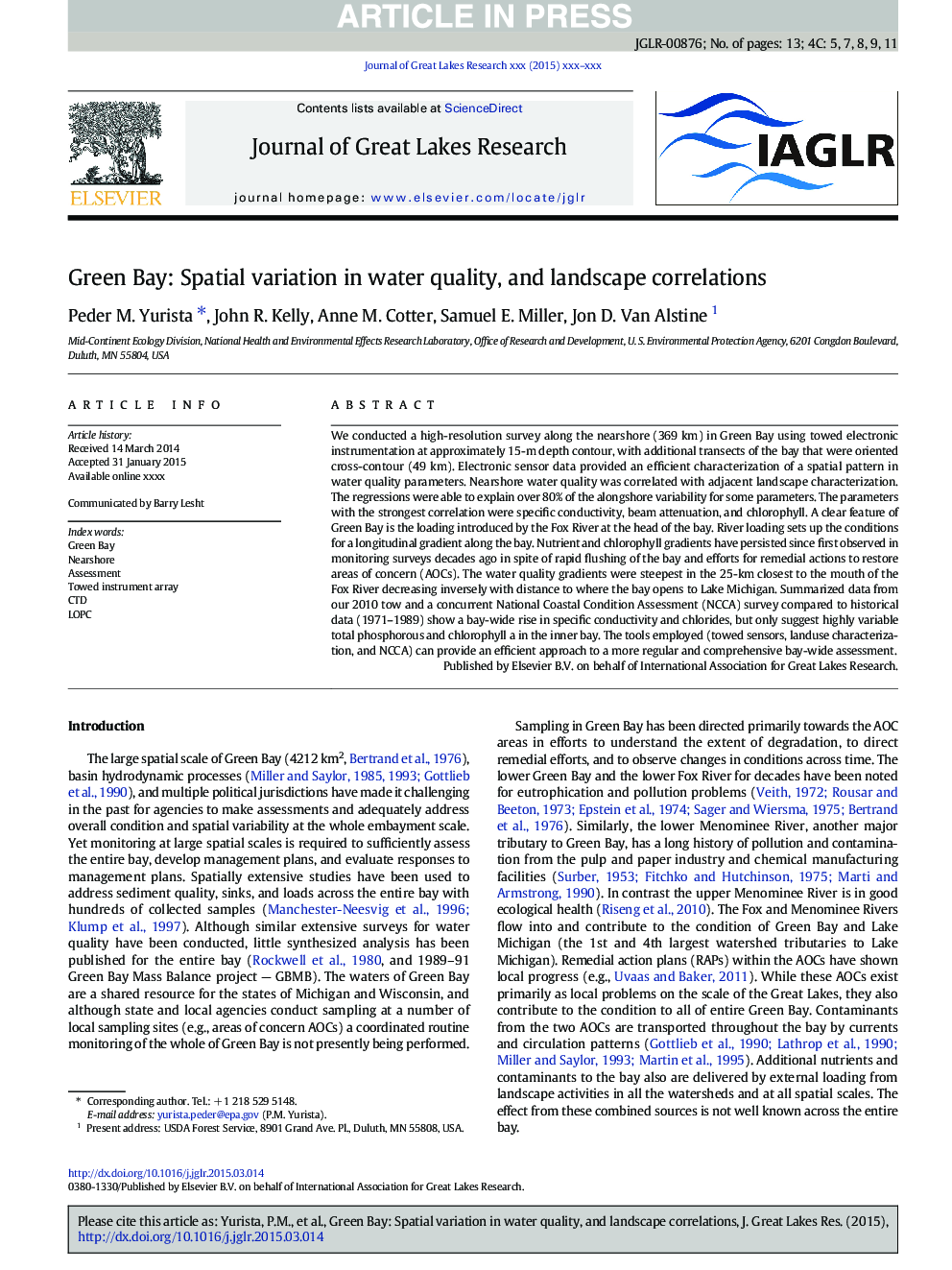| Article ID | Journal | Published Year | Pages | File Type |
|---|---|---|---|---|
| 6305039 | Journal of Great Lakes Research | 2015 | 13 Pages |
Abstract
We conducted a high-resolution survey along the nearshore (369Â km) in Green Bay using towed electronic instrumentation at approximately 15-m depth contour, with additional transects of the bay that were oriented cross-contour (49Â km). Electronic sensor data provided an efficient characterization of a spatial pattern in water quality parameters. Nearshore water quality was correlated with adjacent landscape characterization. The regressions were able to explain over 80% of the alongshore variability for some parameters. The parameters with the strongest correlation were specific conductivity, beam attenuation, and chlorophyll. A clear feature of Green Bay is the loading introduced by the Fox River at the head of the bay. River loading sets up the conditions for a longitudinal gradient along the bay. Nutrient and chlorophyll gradients have persisted since first observed in monitoring surveys decades ago in spite of rapid flushing of the bay and efforts for remedial actions to restore areas of concern (AOCs). The water quality gradients were steepest in the 25-km closest to the mouth of the Fox River decreasing inversely with distance to where the bay opens to Lake Michigan. Summarized data from our 2010 tow and a concurrent National Coastal Condition Assessment (NCCA) survey compared to historical data (1971-1989) show a bay-wide rise in specific conductivity and chlorides, but only suggest highly variable total phosphorous and chlorophyll a in the inner bay. The tools employed (towed sensors, landuse characterization, and NCCA) can provide an efficient approach to a more regular and comprehensive bay-wide assessment.
Keywords
Related Topics
Physical Sciences and Engineering
Earth and Planetary Sciences
Earth and Planetary Sciences (General)
Authors
Peder M. Yurista, John R. Kelly, Anne M. Cotter, Samuel E. Miller, Jon D. Van Alstine,
